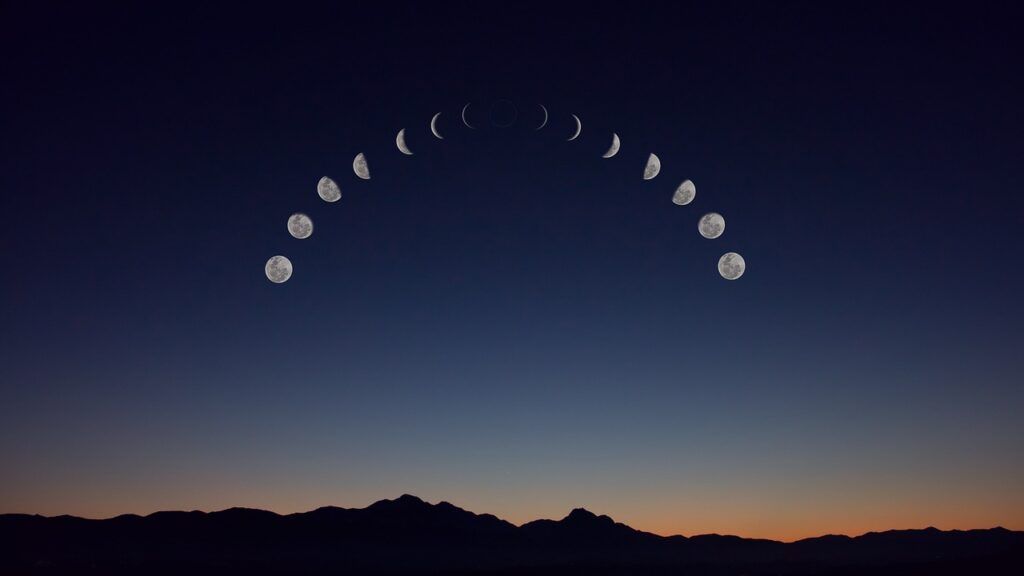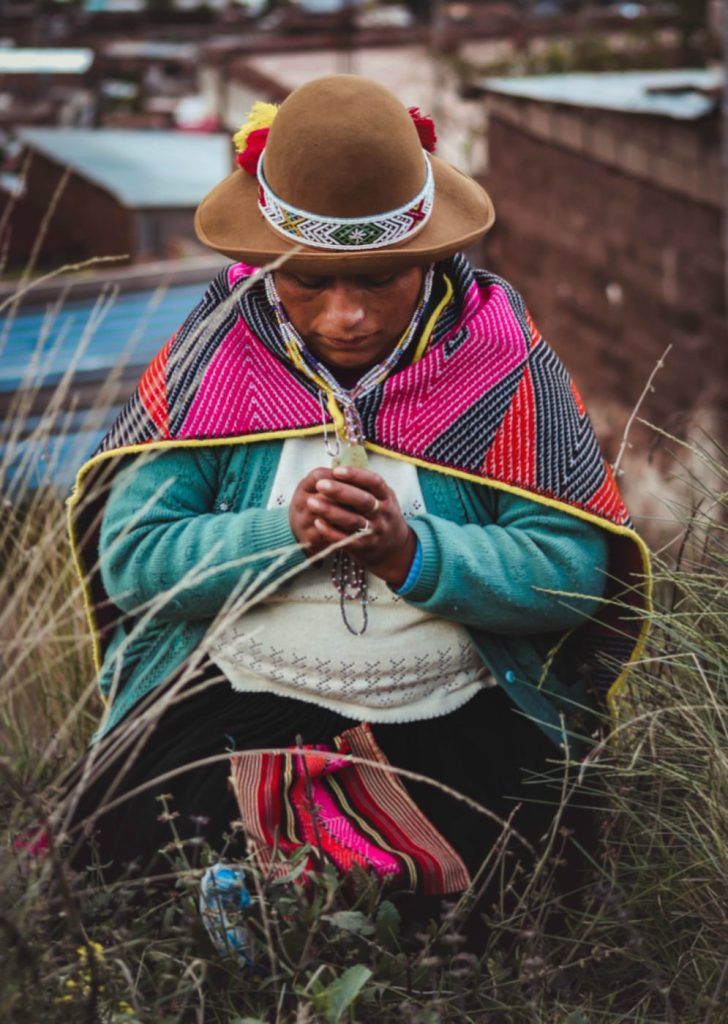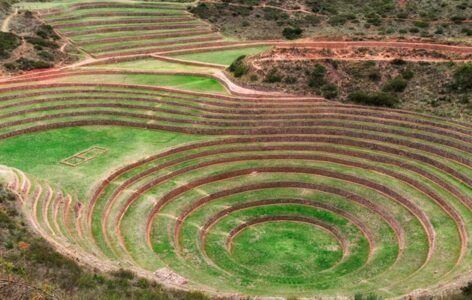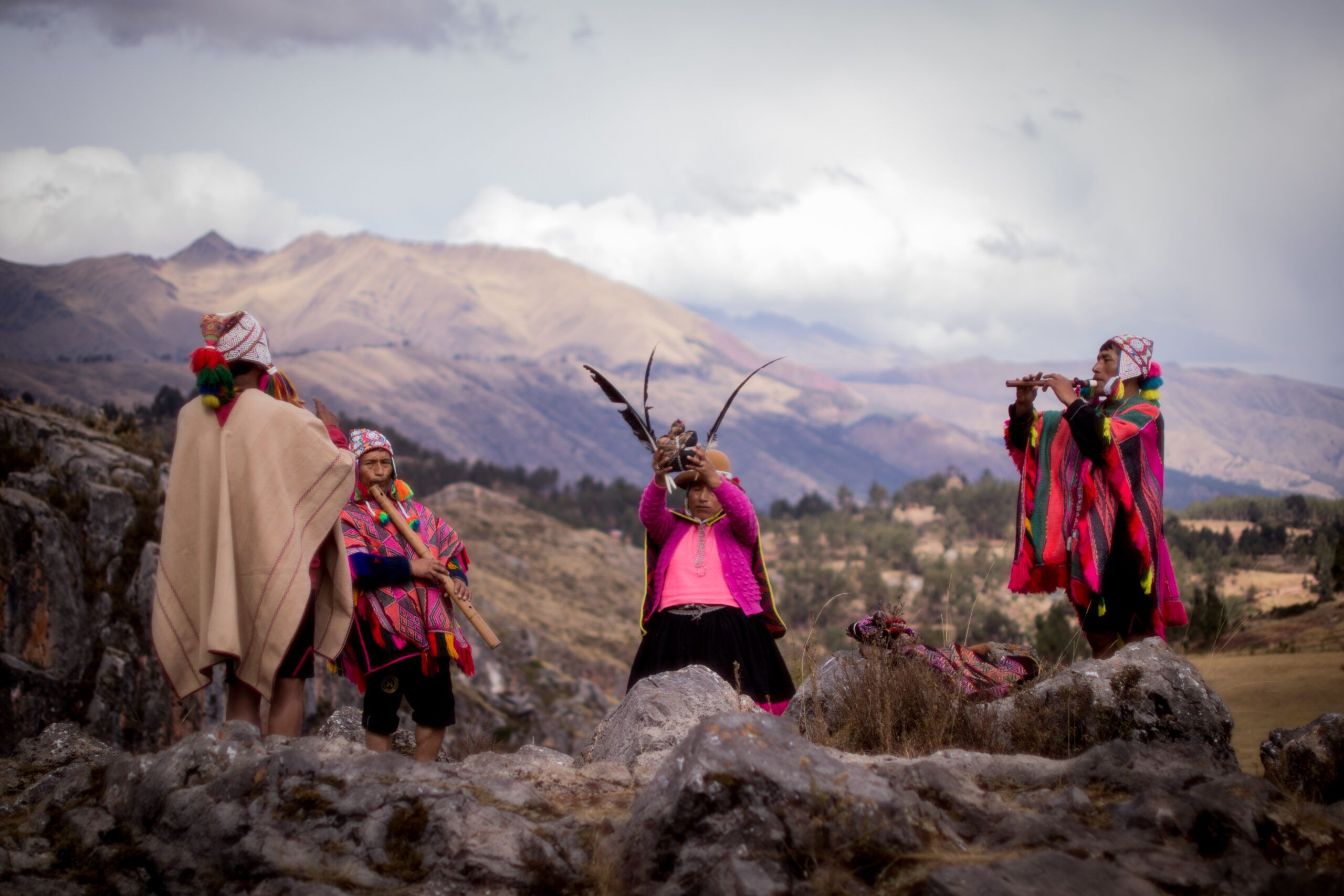In Andean cosmology, Mamakilla, or “Mother Moon,” is one of the most revered deities. She is not only the consort of Inti (the Sun) but also the luminous guardian of women, fertility, water, and cycles of life. In the Andes, people revere the moon as a living presence, a goddess whose power weaves deeply into medicine, ritual, and the sacred feminine, unlike in Western traditions that reduce her to a celestial body.

For women, Mamakilla has always been understood as a spiritual ally. Her changing light reminds us that life itself is cyclical—birth, growth, death, and renewal. This cyclical vision of existence forms the backbone of Andean medicine.
Mamakilla and Women’s Cycles
Traditional Andean communities honored a woman’s menstrual cycle as sacred and aligned it with the rhythms of Mamakilla. They regarded blood not with shame but as a powerful offering to Pachamama (Mother Earth), carrying both life and fertility. They encouraged women to rest, reflect, and connect with the moon during menstruation, recognizing it as a time when their bodies entered their deepest dialogue with the cosmos.

Midwives and healers recognized that irregular cycles, infertility, or painful menstruation could be treated not only with herbs but also with rituals of lunar alignment. Women would pray, bathe in springs blessed by the moonlight, and wear silver ornaments—metal associated with Mamakilla—to invite balance back into their bodies.
Moonlight as Medicine
The Andean worldview acknowledges that light itself carries healing power. Just as Inti’s rays are a source of strength, Mamakilla’s soft light was believed to soothe, cool, and restore balance.

- Healers encouraged women with insomnia or emotional heaviness to spend time under the moon, allowing her gentle presence to calm the mind and heart.
- Pregnant women, in particular, sought her protection, invoking Mamakilla to guard their wombs and guide their births.
In some regions of Peru and Bolivia, women still sing to the moon during pregnancy, asking her to “pull” the baby into the world safely, reflecting the intimate bond between lunar energy and childbirth.
Ceremonies for Women under Mamakilla
Ceremonies dedicated to Mamakilla were often conducted at night, on open plains, or near sacred lakes where her reflection danced on the waters. These rituals were especially meaningful for women, who gathered to:

- Seek fertility through offerings of coca leaves, maize, and silver.
- Heal reproductive ailments, asking Mamakilla to illuminate and cleanse the womb.
- Mark transitions, such as a girl’s first menstruation, a marriage, or the healing after a miscarriage or loss.
By honoring the moon, women reaffirmed their sacred role as guardians of life, mirroring the moon’s constant renewal.
Mamakilla and Water: Womb of Healing

Water and the moon are inseparable in Andean medicine.
Just as the moon influences tides, it was believed to affect the inner waters of women’s bodies. Midwives noticed the moon’s subtle pull on fertility, and ceremonies often combined lunar invocations with water rituals. Bathing in rivers or lakes under moonlight was thought to purify the womb, wash away grief, and restore the flow of energy.
Silver: The Metal of the Moon

Silver, known as the “metal of Mamakilla,” was worn especially by women as protection.
Earrings, pendants, and diadems carried not just beauty but also healing symbolism. Andean people believed silver absorbed the cool, feminine energy of the moon and protected the wearer from illness, infertility, and emotional imbalance. Even today, Andean silversmiths dedicate their work to Mamakilla, honoring her through sacred designs.
The Feminine Medicine of Mamakilla
Through her, women in the Andes have always found a mirror of their own strength, resilience, and capacity for renewal. Mamakilla teaches us to honor the feminine body as sacred, carrying wisdom and cycles that we must respect rather than suppress.
In a world that often ignores or devalues women’s rhythms, women reclaim ancient medicine when they return to Mamakilla’s teachings: they listen to their bodies, embrace their cycles, and recognize healing as cyclical, luminous, and deeply feminine.
References
- Bastien, J. W. (1985). Mountain of the Condor: Metaphor and Ritual in an Andean Ayllu. Waveland Press.
- Gose, P. (1994). Deathly Waters and Hungry Mountains: Agrarian Ritual and Class Formation in an Andean Town. University of Toronto Press.
- Morphy, H., & Tilley, C. (2006). Sacred Landscapes and Cultural Politics. Berg.
- Van den Berg, H. (1989). La organización social y el simbolismo ritual de los pastores andinos. Cuzco: Centro Bartolomé de las Casas.



